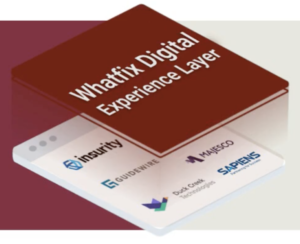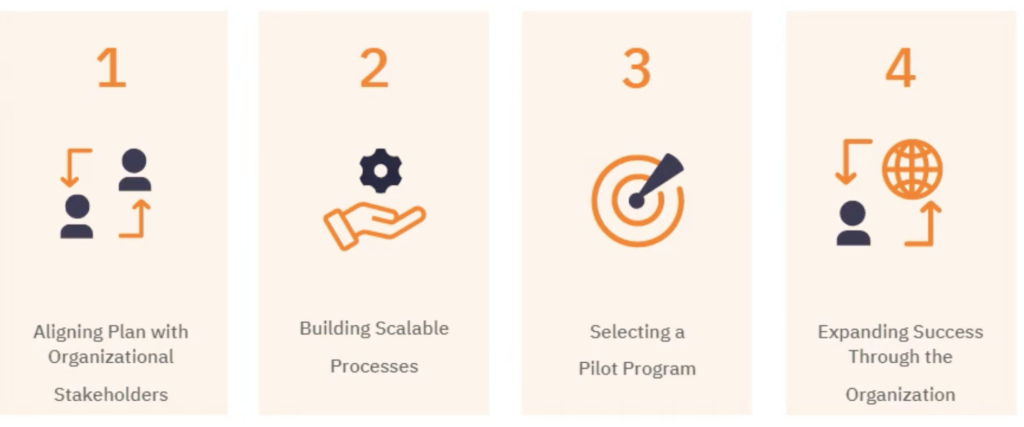A digital adoption platform is quite beneficial when it starts from this baseline of needs, software applications, and types of contact. You can use an application on a browser, in a mobile app, or on their desktop version if you choose to download that tool to utilize. And we know we need to connect them better with all of these different individual users, internal employees, external customers, administrators, content creators, students looking to learn in an l&d context, and this connective tissue that is facilitated by adapt solution. This experiential layer helps really guide this user group through the robustness of these applications, let alone there.
In actuality, a real digital adoption platform will underpin the use case since it will provide guidance, on-demand support, announcements, surveys, analytics & automation to synthesize information to improve the process in real-time. In that moment of need, as an experiential but invisible layer, every day you don’t need something blaring across your screen and pulling your attention away from what might be one of the most important things you’ll hear me say. Clippy from Microsoft Word was a true early version of a solution that could get you robustness on a tool but was too preoccupied with being right in front of you and interrupting your workflow too much.

By offering contextual, interactive real-time advice and support, the experiential layer enables users to learn, self-train, self serve and acquire deep know-how software applications. The adoption of digital technology is far from simple. It requires a significant amount of support as well as a significant amount of time and attention. It’s time-consuming in terms of the personnel you’ll need to get on board to complete it properly.
Enterprise organizations are estimated to spend $1.7 trillion on digital adoption programs alone, not adding the $550 billion spent on various SaaS and software solutions across enterprises. So, rounding up, that’s over $2.25 trillion dollars dedicated to technology for businesses alone, which is a huge sum when we consider the following statistic from a recent Bain and Company study, which found that only 8% of global companies ever achieved their desired business outcomes from their digital technology investments.

When it comes to setting up an implementation for a digital adoption solution or platform, whether for yourself or for your organization, leadership alignment is a fantastic place to start. According to Gartner, having a strong stakeholder agreement to handle Step #1 can save cycle time by more than 20%. And this is especially true when it comes to digital adoption, which may be classified as a radical innovation project for a CTO, particularly a CFO concerned with ROI. Stakeholder alignment may be more difficult because these are frequently complicated, high-risk projects or profiles. As stated previously, digital adoption is a broad concept.

Software usage must improve in order to meet the needs of more users, including new and expanded needs that an organization may encounter. And it’s at this point that the advantages begin to materialize in terms of meeting the aims of software users. As we think about the fact that we can leverage a platform for integration or a product to gain more efficiencies more visibly and more comprehensively, our digital adoption process only expands as we grow. Because the more applications you can integrate, the greater the return on investment for every organization, because you can disperse knowledge, capability, and skillsets from a few key users over a whole organization. Smartly putting a lot of emphasis on behavioural modification through intelligent nudges, communal best practices, and context testing can be leveraged with the application of digital adoption. For digital adoption solutions to genuinely improve each user’s everyday experience, optimizing these experiences and engagements with software is always happening in the background, or should always be happening in the background.
Tim Ottolin is the director of brand marketing at Whatfix. Tim takes care of all the branding and brand marketing activities in Whatfix. With a great experience across industries, Tim is an integral part of all the branding initiatives of Whatfix.
Copyright © 2025 Whatfix. All rights reserved
This website is owned and operated by Whatfix Private Limited (Formerly known as Quicko Technosoft Labs Private Limited)